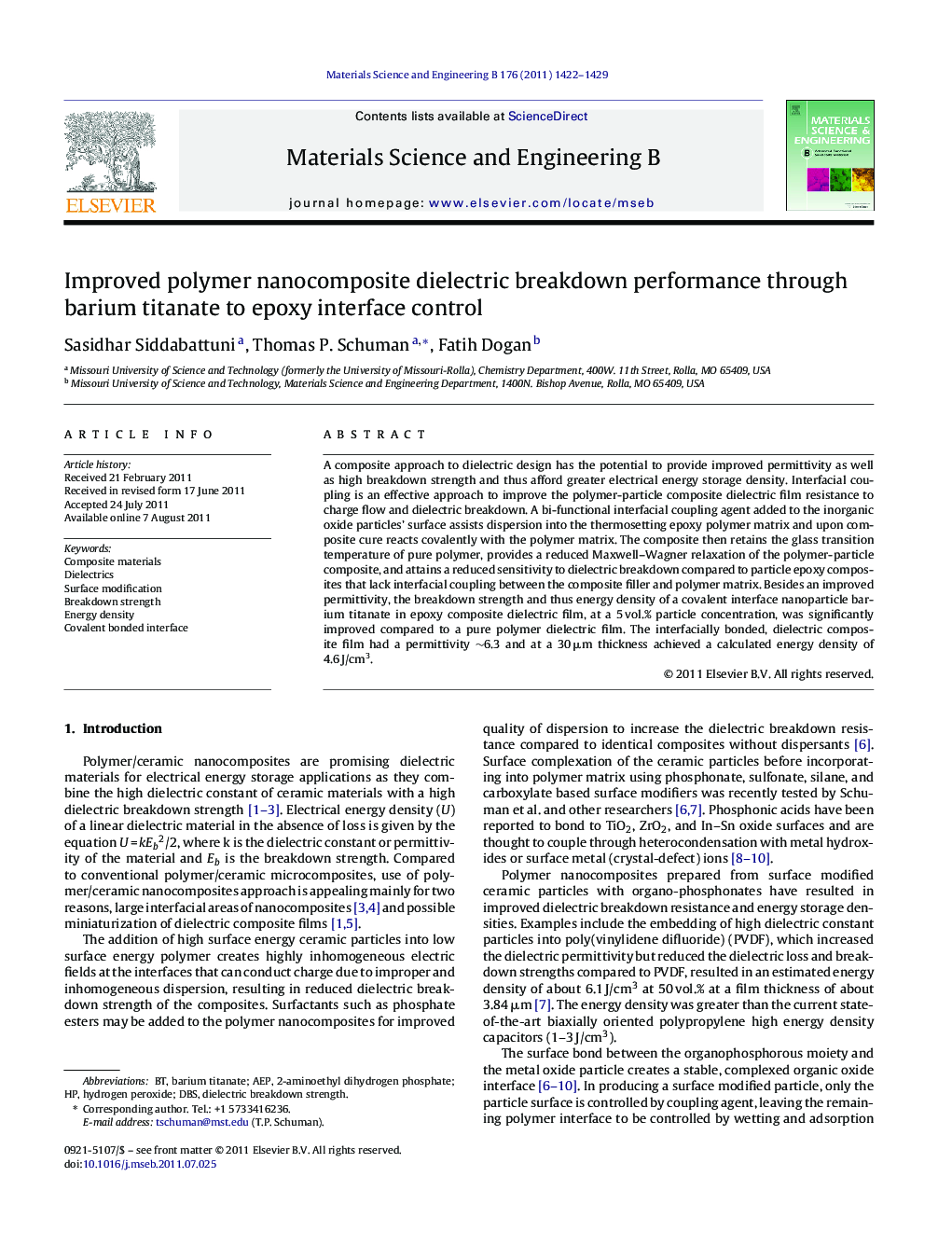| Article ID | Journal | Published Year | Pages | File Type |
|---|---|---|---|---|
| 1529117 | Materials Science and Engineering: B | 2011 | 8 Pages |
A composite approach to dielectric design has the potential to provide improved permittivity as well as high breakdown strength and thus afford greater electrical energy storage density. Interfacial coupling is an effective approach to improve the polymer-particle composite dielectric film resistance to charge flow and dielectric breakdown. A bi-functional interfacial coupling agent added to the inorganic oxide particles’ surface assists dispersion into the thermosetting epoxy polymer matrix and upon composite cure reacts covalently with the polymer matrix. The composite then retains the glass transition temperature of pure polymer, provides a reduced Maxwell–Wagner relaxation of the polymer-particle composite, and attains a reduced sensitivity to dielectric breakdown compared to particle epoxy composites that lack interfacial coupling between the composite filler and polymer matrix. Besides an improved permittivity, the breakdown strength and thus energy density of a covalent interface nanoparticle barium titanate in epoxy composite dielectric film, at a 5 vol.% particle concentration, was significantly improved compared to a pure polymer dielectric film. The interfacially bonded, dielectric composite film had a permittivity ∼6.3 and at a 30 μm thickness achieved a calculated energy density of 4.6 J/cm3.
► A covalent filler-matrix interface improves the dielectric properties of a polymer-particle nanocomposite dielectric. ► A covalent interface reduced the polymer free volume around the nanoparticles as assessed through Tg measurements. ► Composite Tg was raised and breakdown strength improved for nanocomposites with a covalent polymer-particle interface. ► A larger Maxwell–Wagner (MW) relaxation correlated with reduced breakdown strengths and energy storage densities. ► The MW relaxation could be considered a dielectric defect regarding breakdown strength and energy storage density.
